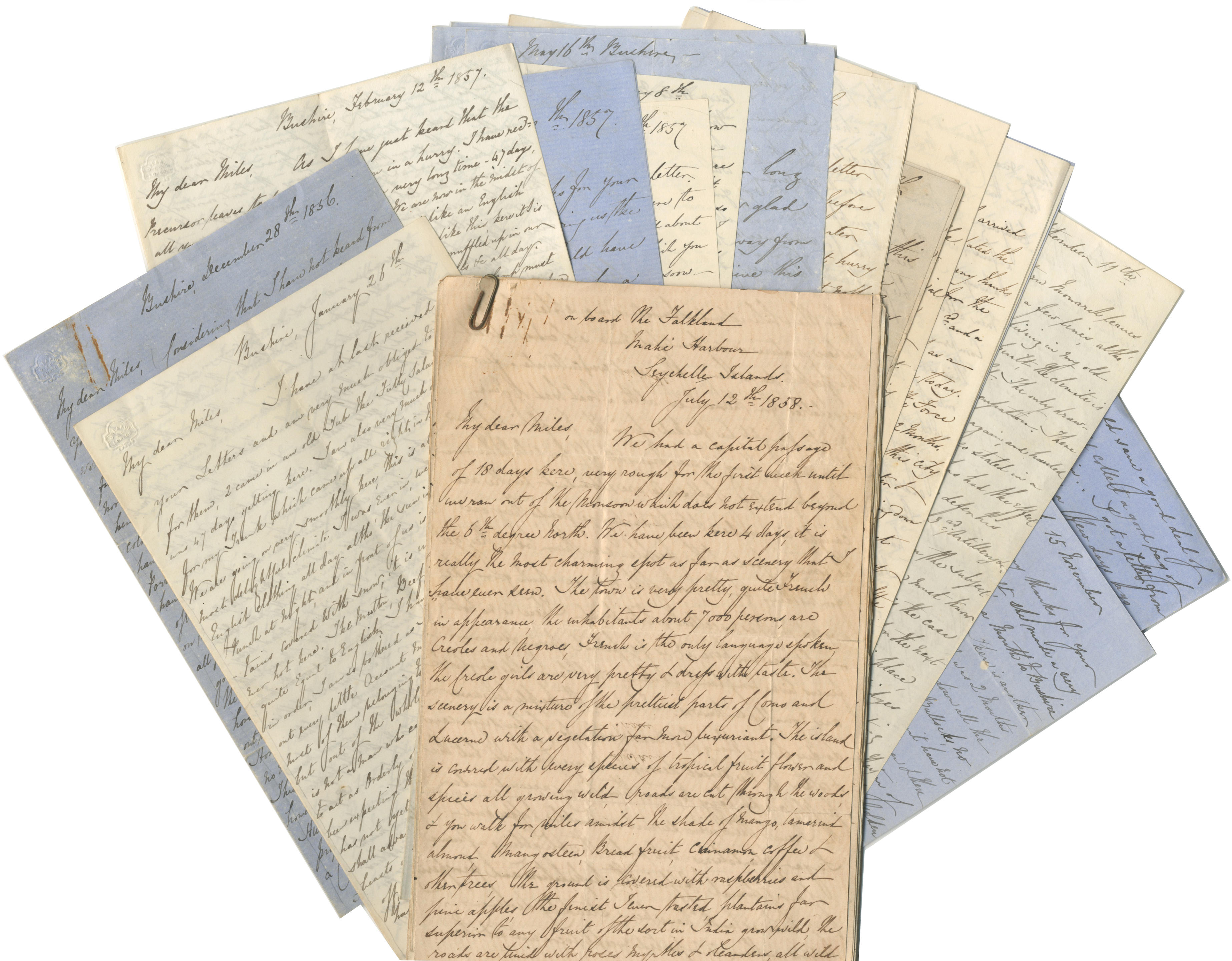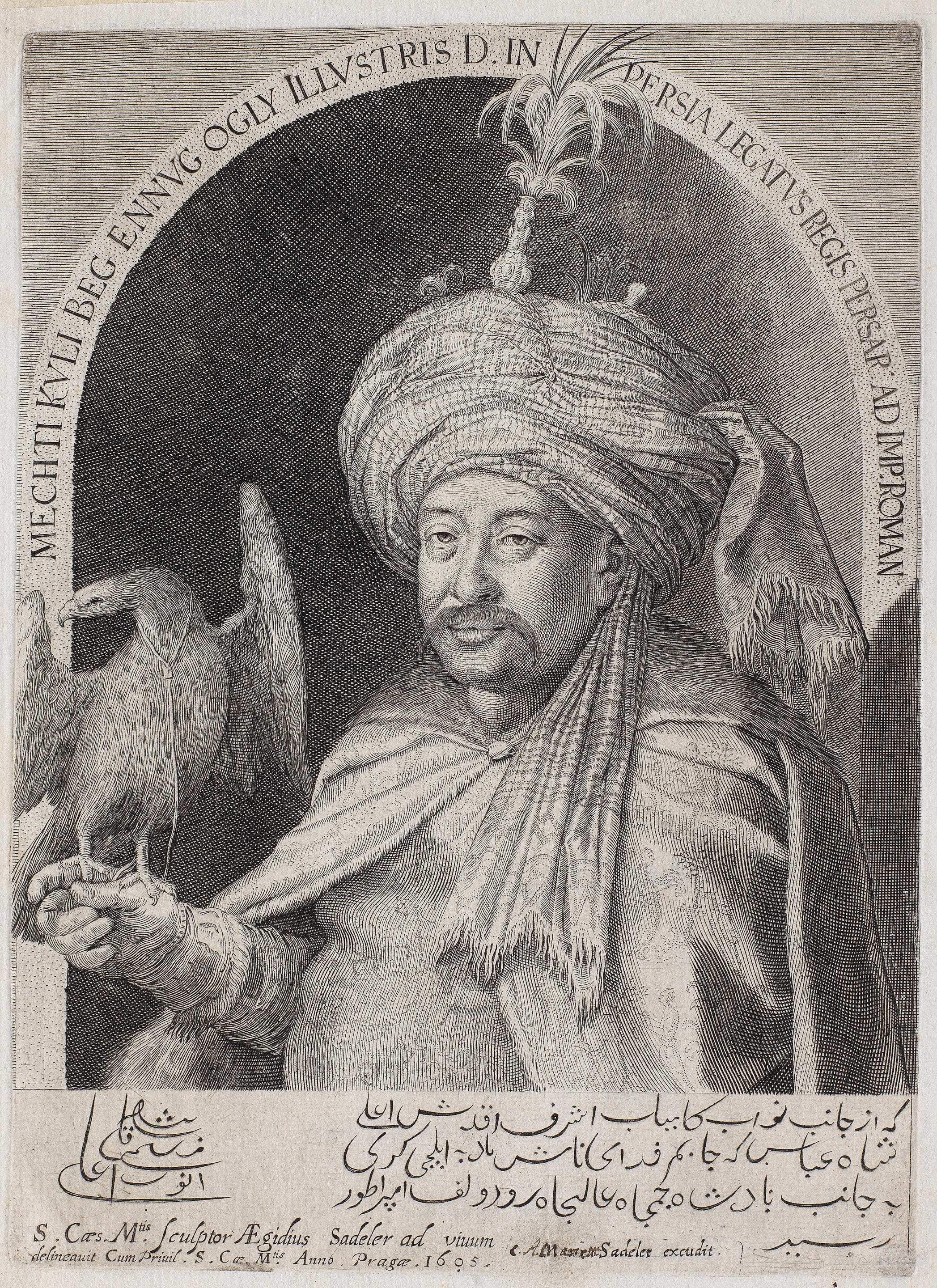The Persian War C.B. pair awarded to Major-General H. W. Trevelyan, Bombay Artillery, commanding the Artillery of the Persian Field Force The Most Honourable Order of the Bath, C.B. (Military) Companion’s breast badge, 22 carat gold and enamels, hallmarked London 1857, maker’s mark ‘WN’ for William Neale, complete with swivel-ring bar suspension and gold ribbon buckle; India General Service 1854-95, 1 clasp, Persia (Lt. Col. H. W. Trevelyan, C.B. Arty.) extremely fine (2) £4000-5000 Footnote Provenance: Bought Hayward & Hall 1969. Henry Willoughby Trevelyan was born on 26 January at Nettlecombe, Somerset, third son of the Rev. George Trevelyan, Rector of Nettlecombe, and Harriet his wife, daughter of Sir Richard Neave Bt. Educated at the Royal Military Academy, Woolwich, he was nominated a Cadet for the H.E.I.C. Military Seminary, Addiscombe, for the season 1817-18, by George Smith Esq., a Director of the H.E.I.C. He was not, however, passed by the Selection Committee until 4 February 1819, being admitted to Addiscombe on the following day. He was gazetted a 2nd Lieutenant in the Bombay Artillery on 19 December 1820, and a Lieutenant on the following day. Trevelyan is next heard of as Adjutant of the 1st Battalion of the Bombay Artillery, which post he held from December 1824 until April 1828. Later he must have been seconded to the Political Service for in 1833 he became Assistant Political Agent in Ajmere. On 19 December 1835 he was made Brevet Captain and in the following year became Superintendent at Ajmere. In 1837 he became Political Agent at Kotah and in November of the same year he married Emilia Anne, daughter of S. H. Greig. On 4 June 1838 he was promoted substantive Captain and in 1839 became Second Assistant Agent to the Governor General of Rajputana. Appointments followed, in 1841 as First Assistant Resident, Indore, and in 1842 as Political Agent, Bhopal. On 9 November 1846 he was awarded a Brevet Majority and made substantive on 28 April 1851. In 1854 he was successively Political Agent at Mahee Kanta and then at Kutch. When war was declared on Persia in November 1856, Trevelyan was appointed to command the Artillery of the Persian Field Force. The expedition first captured the small island of Kharak to use as an advanced base and then, on 7 December, landed at Halilah Bay, some four miles south of Reshire. Trevelyan landed there with his artillery, consisting of 3rd Troop Horse Artillery; 1st Company, 1st Battalion B.A., manning the 3rd Light Field Battery; and 4th Company, 1st Battalion B.A., manning the 5th Light Field Battery. Reshire was captured after what was little more than a skirmish on 9 December and Bushire capitulated on the following day after a bombardment by ships of the Indian Navy. Trevelyan was among the senior officers mentioned in Major-General Stalker’s despatch of 12 December as having ‘earned my warmest thanks for the manner in which his arduous duties have been carried on.’ Meanwhile, the British Government had decided to extend the operation in Persia and the size of the expedition was increased, the existing force being styled the 1st Division, and the reinforcements becoming the 2nd Division, under Major-General Havelock with Lieutenant-General Outram in overall command. Outram landed at Bushire on 27 January 1857 and on 3 February, leaving a garrison of 2,000 men, he marched with 4,000 men and 18 guns, these from 3rd Troop H.A., 1/1 Battalion and 4/1 Battalion B.A. under Trevelyan’s command. On 5-6 February the force occupied the deserted Persian camp at Borasjeen, and having made a show of force, the expedition began to withdraw on 7 February. The Persians followed up, however, and after a night attack they engaged the British on 8 February at the battle of Khoosh-ab, where they were defeated and dispersed. The force continued its retirement to Chagaduk, where food and water were available, Trevelyan being in charge of the rearguard. Outram, in his despatch from Bushire of 10 Febru
The Persian War C.B. pair awarded to Major-General H. W. Trevelyan, Bombay Artillery, commanding the Artillery of the Persian Field Force The Most Honourable Order of the Bath, C.B. (Military) Companion’s breast badge, 22 carat gold and enamels, hallmarked London 1857, maker’s mark ‘WN’ for William Neale, complete with swivel-ring bar suspension and gold ribbon buckle; India General Service 1854-95, 1 clasp, Persia (Lt. Col. H. W. Trevelyan, C.B. Arty.) extremely fine (2) £4000-5000 Footnote Provenance: Bought Hayward & Hall 1969. Henry Willoughby Trevelyan was born on 26 January at Nettlecombe, Somerset, third son of the Rev. George Trevelyan, Rector of Nettlecombe, and Harriet his wife, daughter of Sir Richard Neave Bt. Educated at the Royal Military Academy, Woolwich, he was nominated a Cadet for the H.E.I.C. Military Seminary, Addiscombe, for the season 1817-18, by George Smith Esq., a Director of the H.E.I.C. He was not, however, passed by the Selection Committee until 4 February 1819, being admitted to Addiscombe on the following day. He was gazetted a 2nd Lieutenant in the Bombay Artillery on 19 December 1820, and a Lieutenant on the following day. Trevelyan is next heard of as Adjutant of the 1st Battalion of the Bombay Artillery, which post he held from December 1824 until April 1828. Later he must have been seconded to the Political Service for in 1833 he became Assistant Political Agent in Ajmere. On 19 December 1835 he was made Brevet Captain and in the following year became Superintendent at Ajmere. In 1837 he became Political Agent at Kotah and in November of the same year he married Emilia Anne, daughter of S. H. Greig. On 4 June 1838 he was promoted substantive Captain and in 1839 became Second Assistant Agent to the Governor General of Rajputana. Appointments followed, in 1841 as First Assistant Resident, Indore, and in 1842 as Political Agent, Bhopal. On 9 November 1846 he was awarded a Brevet Majority and made substantive on 28 April 1851. In 1854 he was successively Political Agent at Mahee Kanta and then at Kutch. When war was declared on Persia in November 1856, Trevelyan was appointed to command the Artillery of the Persian Field Force. The expedition first captured the small island of Kharak to use as an advanced base and then, on 7 December, landed at Halilah Bay, some four miles south of Reshire. Trevelyan landed there with his artillery, consisting of 3rd Troop Horse Artillery; 1st Company, 1st Battalion B.A., manning the 3rd Light Field Battery; and 4th Company, 1st Battalion B.A., manning the 5th Light Field Battery. Reshire was captured after what was little more than a skirmish on 9 December and Bushire capitulated on the following day after a bombardment by ships of the Indian Navy. Trevelyan was among the senior officers mentioned in Major-General Stalker’s despatch of 12 December as having ‘earned my warmest thanks for the manner in which his arduous duties have been carried on.’ Meanwhile, the British Government had decided to extend the operation in Persia and the size of the expedition was increased, the existing force being styled the 1st Division, and the reinforcements becoming the 2nd Division, under Major-General Havelock with Lieutenant-General Outram in overall command. Outram landed at Bushire on 27 January 1857 and on 3 February, leaving a garrison of 2,000 men, he marched with 4,000 men and 18 guns, these from 3rd Troop H.A., 1/1 Battalion and 4/1 Battalion B.A. under Trevelyan’s command. On 5-6 February the force occupied the deserted Persian camp at Borasjeen, and having made a show of force, the expedition began to withdraw on 7 February. The Persians followed up, however, and after a night attack they engaged the British on 8 February at the battle of Khoosh-ab, where they were defeated and dispersed. The force continued its retirement to Chagaduk, where food and water were available, Trevelyan being in charge of the rearguard. Outram, in his despatch from Bushire of 10 Febru















Testen Sie LotSearch und seine Premium-Features 7 Tage - ohne Kosten!
Lassen Sie sich automatisch über neue Objekte in kommenden Auktionen benachrichtigen.
Suchauftrag anlegen